Laser weapons on combat aircraft. Is it possible to resist him?
No less changes can occur within one type of weapon as its characteristics change. For example, using the example of a manned aviation you can see how the designs of aircraft and their weapons changed, and in accordance with this, the tactics of air warfare changed. Firefights between pilots using the personal weapons of pilots of the first wooden biplanes gave way to the fierce maneuvering air battles of World War II. The Vietnam War began the use of guided air-to-air (A-A) missiles, and at the moment long-range air combat using guided missile weapons is considered the main method of air combat.
Weapons based on new physical principles
One of the most important directions in the development of weapons in the 21st century can be considered the creation of weapons based on new physical principles (NPP). Despite the skepticism with which many perceive weapons in the NFP, their appearance could radically change the appearance of the armed forces of the near future. When talking about weapons in NFP, we primarily mean laser weapons (LO) and kinetic weapons with electric/electromagnetic projectile acceleration.
The world's leading powers are investing huge amounts of money in the development of laser and kinetic weapons. The leaders in the number of projects being implemented are countries such as the USA, Germany, Israel, China, and Türkiye. The political and geographical dispersion of the ongoing developments does not allow us to assume a “conspiracy” with the aim of leading the enemy (Russia) into an obviously dead-end direction of arms development. To carry out work, in particular, on the creation of laser weapons, the largest defense concerns are involved: American Lockheed Martin, Northrop Grumman, Boeing, General Atomic and General Dynamics, German Rheinmetall AG and MBDA, and many others.
When people talk about laser weapons, they often remember the negative experience gained in the 20th century as part of Soviet and American programs to create combat lasers. Here it is necessary to take into account the key difference - lasers of that period, capable of providing power sufficient to hit targets, were either chemical or gas-dynamic, which determined their significant size, the presence of flammable and toxic components, inconvenience of operation and low efficiency. The failure to adopt combat models based on the results of those tests was perceived by many as the final collapse of the idea of laser weapons.
In the 21st century, the emphasis has shifted to the creation of fiber and solid-state lasers, which have become widespread in industry. At the same time, target guidance and tracking technologies have significantly advanced, new optical schemes and batch combination of beams from several laser units into a single beam using diffraction gratings have been implemented. All this made the emergence of laser weapons a near reality.
At the moment, we can assume that the supply of serial laser weapons to the armed forces of the leading countries of the world has already begun. Early 2019 Rheinmetall AG announced the successful completion of tests of a 100 kW combat laser, which can be integrated into the MANTIS air defense system of the Bundeswehr armed forces. The US Army has awarded a contract to Northrop Grumman and Raytheon for creation of a 50 kW laser weapon to equip Stryker combat vehicles converted for short-range air defense missions (M-SHORAD). But the biggest surprise came from the Turks, using a ground-based laser system to destroy a combat unmanned aerial vehicle (UAV) during real combat operations in Libya.
At the moment, most laser weapons are being developed for use from land-based and sea-based platforms, which is understandable due to the lower requirements imposed on laser weapon developers in terms of weight, size characteristics and energy consumption. However, it can be assumed that laser weapons will have the greatest impact on the appearance and tactics of using combat aircraft.
Laser weapons on combat aircraft
The possibility of effective use of laser weapons on combat aircraft is due to the following factors:
— high permeability of the atmosphere for laser radiation, increasing with increasing flight altitude;
— potentially vulnerable targets in the form of air-to-air missiles, especially with optical and thermal homing heads;
— weight and size restrictions imposed on anti-laser protection of aircraft and aircraft ammunition.
At the moment, the United States is showing the greatest activity in equipping combat aircraft with laser weapons. One of the most likely candidates for the installation of LO is the fifth generation aircraft F-35B. The installation process removes the lift fan that provides the F-35B with vertical takeoff and landing capabilities. Instead, a complex should be installed, including an electric generator driven by a jet engine shaft, a cooling system and a laser weapon with a beam guidance and retention system. The estimated power should be from 100 kW at the initial stage, followed by a gradual increase to 300 kW and up to 500 kW. Taking into account the emerging progress in the creation of laser weapons, we can expect the first results after 2025 and the appearance of serial samples with a laser of 300 kW or more after 2030.
Another prototype under development is Lockheed Martin's SHiELD system for equipping the F-15 Eagle and F-16 Fighting Falcon fighters. Ground tests of the SHiELD complex were successfully completed at the beginning of 2019, air tests are planned for 2021, entry into service is planned after 2025.
In addition to the creation of laser weapons, equally important is the development of compact power supplies. Work in this area is also actively underway, for example, in May 2019, a British company Rolls-Royce demonstrated a compact hybrid power plant for combat lasers.
Thus, it can be assumed with a high probability that in the coming decades laser weapons will occupy their niche in the arsenal of combat aircraft. What tasks will it solve in this capacity?
The use of laser weapons by combat aircraft
The main declared task of laser weapons on board combat aircraft should be to intercept attacking enemy air-to-air and surface-to-air (Z-A) missiles. At the moment, the possibility of intercepting unguided mortar mines and multiple launch rocket system shells with lasers with a power of 30 kW (the optimal value is considered to be 100 kW) at a range of several kilometers has been confirmed. Laser and optical jamming systems have already been adopted and are actively being used, providing temporary blinding of the sensitive optical heads of man-portable air defense systems (MANPADS).
Thus, the appearance on board of aircraft of laser weapons with a power of 100 kW and above will ensure the protection of the aircraft from V-V and Z-V missiles with optical and thermal homing heads, that is, MANPADS missiles and short-range V-V missiles. Moreover, such missiles will most likely be hit at a distance of up to five kilometers or more in a short period of time. At the moment, the presence of all-aspect short-range V-V missiles is considered one of the reasons for the lack of need for maneuverable close combat, since the combination of “transparent armor” technology and advanced guidance systems makes it possible to target missile weapons without significantly changing the aircraft’s position in space. The limited weight and size characteristics of V-V missiles and MANPADS missiles will make it difficult to install effective anti-laser protection on them.
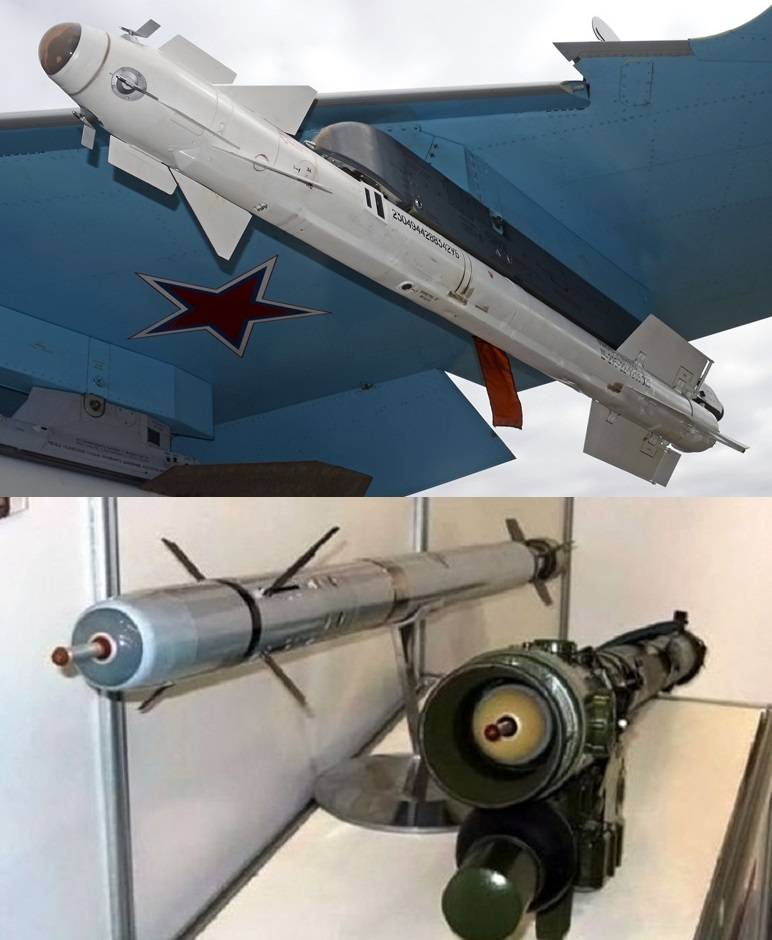
The next candidates for destruction by laser weapons will be long- and medium-range V-V and Z-V missiles, which use active radar homing heads (ARLGSN). First of all, the question arises of creating a radio-transparent protective material that provides protection for the ARLGSN fabric. In addition, the processes that will occur when the head fairing is irradiated with laser radiation require separate study. It is possible that the heating products formed in this case will interfere with the passage of radar radiation and disrupt target acquisition. If a solution to this problem is not found, then you will have to return to the radio command guidance of V-V and Z-V missiles directly by an aircraft or an anti-aircraft missile system (SAM). And this will again bring us back to the problem of the limited number of channels for simultaneous missile guidance and the need to maintain the aircraft’s course until the missiles hit the target.
With an increase in the power of laser radiation, not only elements of the homing system can be damaged, but also other structural elements of V-V and Z-V missiles, which will require them to be equipped with anti-laser protection. The use of anti-laser protection will increase the size and weight and significantly reduce the range, speed and maneuverability characteristics of V-V and W-V missiles. In addition to the deterioration of tactical and technical characteristics (TTX), which make it difficult to hit a target, missiles with anti-laser protection will be more vulnerable to highly maneuverable CUDA-type anti-missiles, which do not require protection from laser radiation.
Thus, the appearance of laser weapons on combat aircraft is to some extent a one-sided game. To protect V-V and Z-V missiles from laser damage, it will be necessary to equip them with anti-laser protection, increase flight speed to hypersonic to minimize the time spent in the laser radiation zone, and, possibly, abandon homing heads. At the same time, the ammunition load of larger and more massive V-V and Z-V missiles will be reduced, and they themselves will be more susceptible to interception by small-sized, highly maneuverable CUDA-type anti-missiles.
The limited ammunition load of fifth-generation aircraft, which will especially manifest itself due to the increase in the size and mass of V-V missiles, combined with the high probability of interception by a laser or anti-missile missile, can lead to the fact that opposing combat aircraft with laser weapons on board will enter close combat range , weapons for which are even more vulnerable to laser weapons.
Laser weapons and close air combat (CAC)
Let’s assume that two combat aircraft, having fired their stock of V-V guided missiles, reached a range of 10-15 km relative to each other. In this case, a laser weapon with a power of 300-500 kW can directly impact an enemy aircraft. Modern guidance systems at such a range are quite capable of pinpointing a laser beam at vulnerable elements of an enemy aircraft - the cockpit, reconnaissance equipment, engines, and control drives. At the same time, on-board radio-electronic equipment, based on the optical and radar signature of a particular aircraft, can independently select vulnerable points and point a laser beam at them.
Given the high reaction speed that laser weapons can provide, as a result of a short-range engagement using low-range missiles, both traditionally designed aircraft will most likely be damaged or destroyed, with both pilots primarily killed.
One solution could be the development of compact, short-range, high-speed, radio-guided munitions that can overcome the protection provided by laser weapons due to their high flight speed and salvo density. Just as several anti-tank guided missiles (ATGMs) are required to destroy one modern tank equipped with an active protection system (APS), to defeat one enemy aircraft with laser weapons may require a simultaneous salvo of a certain number of small-sized close-in missiles.
The end of the era of "invisibility"
Speaking about the combat aviation of the future, one cannot fail to mention the promising radio-optical phased antenna array (ROFAR), which should become the basis for reconnaissance equipment for combat aviation. Details about all the capabilities of this technology are still unknown, but potentially the emergence of ROFAR will put an end to all existing technologies for reducing visibility. If difficulties arise with ROFAR, then advanced models of radar stations with active phased antenna arrays (AFAR radars) will be used on promising aircraft, which, in combination with the intensive use of electronic warfare technologies, can also significantly reduce the effectiveness of “stealth” technology.
Based on the foregoing, it can be assumed that in the event that aircraft with laser weapons appear in the enemy air force, an effective solution will be the use of aircraft with a large number of weapons on an external sling. In fact, there will be a certain “rollback” to the 4+/4++ generation, and the current models could be the deeply modernized Su-35S, Eurofighter Typhoon or F-15X. For example, the Su-35S can carry weapons on twelve hardpoints, the Eurofighter Typhoon has thirteen hardpoints, and the upgraded F-15X can carry up to twenty V-B missiles.
The latest Russian multifunctional fighter Su-57 has slightly less capabilities. The external and internal suspensions of the Su-57 can carry a total of up to twelve V-V missiles. It is likely that hardpoints can be developed for Russian fighters, providing, by analogy with the F-15X fighter, the placement of several ammunition on one unit, which will increase the ammunition load of the S-35S and Su-57 fighters to 18-22 missiles. .
Armament
Getting close to an aircraft equipped with a laser weapon can be extremely dangerous due to the high reaction speed of the aircraft. If this happens, it is necessary to maximize the probability of defeating the enemy in the shortest possible time. One of the possible solutions can be considered rapid-firing automatic aircraft guns of about 30 mm caliber with guided projectiles.
The presence of guided projectiles will make it possible to attack an enemy aircraft from a greater distance than is possible with the use of unguided ammunition. At the same time, intercepting 30-40 mm shells with a laser can be difficult due to their small dimensions and the large amount of ammunition in the queue (15-30 shells).
As mentioned earlier, laser weapons primarily pose a threat to missiles with optical and thermal seekers, and possibly also to missiles with ARLGOS. This will affect the nature of the weapons used by combat aircraft to counter enemy aircraft with air defenses. The main weapons designed to destroy aircraft with LOs should be remote-controlled V-V missiles with protection from laser radiation. In this case, the radar's ability to simultaneously guide several V-V missiles to a target will be of particular importance.
An equally important point is the equipping of V-V and Z-V missiles with ramjet engines (ramjet engines). This will not only provide the missile with the energy necessary for maneuvering at maximum range, but will also reduce the time of exposure to radiation due to the high speed of the missile in the final flight phase. In addition, high-speed V-V missiles will be a more difficult target for CUDA-type anti-missiles.
And finally, part of the fighter’s ammunition load should consist of small-sized anti-missile missiles, placed in several units at one suspension point, capable of intercepting enemy V-V and W-V missiles.
conclusions
1. The appearance of laser weapons on combat aircraft, especially in combination with small-sized anti-missile defenses, will require an increase in the transportable ammunition load of V-V missiles for combat aircraft. Since the capacity of the internal compartments of fifth-generation aircraft is limited, it will be necessary to place missiles on an external sling, which will have an extremely negative impact on stealth. This may mean a certain “renaissance” of 4+/4++ generation aircraft.
2. Laser weapons will pose an exceptional danger in close combat, therefore, in the event of an unsuccessful attack from long and medium range, pilots will, if possible, avoid close combat with aircraft equipped with lasers.
3. The possibility of confronting a generation 4+/4++/5 combat aircraft with a large number of explosive missiles and a stealthy generation 5 aircraft with laser weapons on board is determined by the performance of the aircraft and anti-missile missiles in intercepting explosive missiles. Starting from a certain point, the tactics of using massive launches of V-V missiles against aircraft equipped with anti-aircraft missiles and anti-missile defenses may become unworkable, which will require a rethinking of the concept of multi-role combat aircraft, which we will consider in the next material.
- Andrey Mitrofanov
- topwar.ru, forum.militaryparitet.com, naukatehnika.com, aviaru.rf
- Laser weapons: technology, history, status, prospects.
Part 1 Laser weapons: prospects in the air force.
Part 2 Laser weapons: ground forces and air defense.
Part 3 Laser weapons: navy.
Part 4 Resist the light: protection from laser weapons. Part 5
Subscribe and stay up to date with the latest news and the most important events of the day.
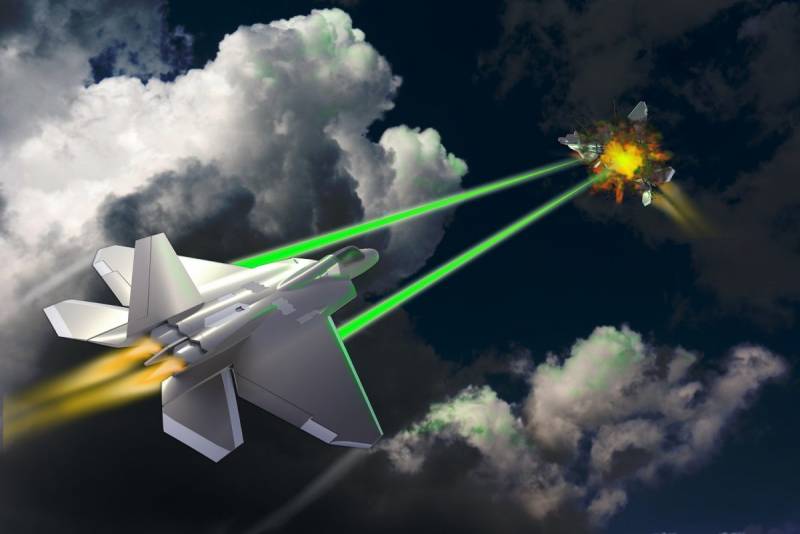
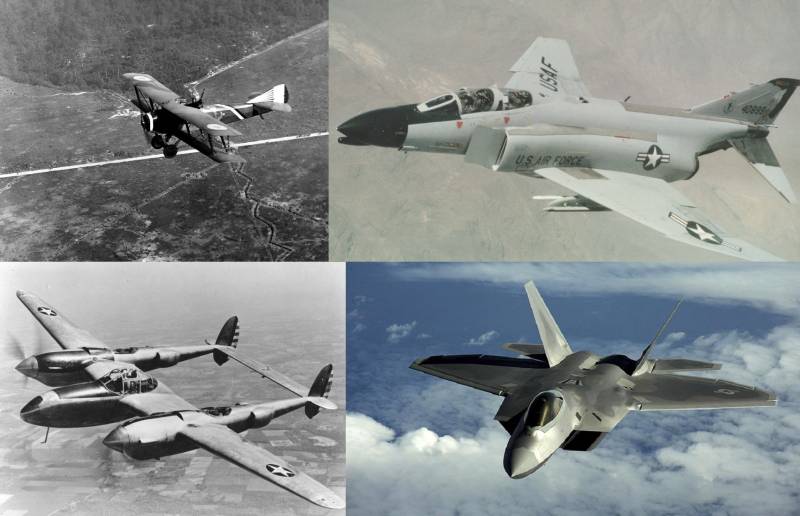
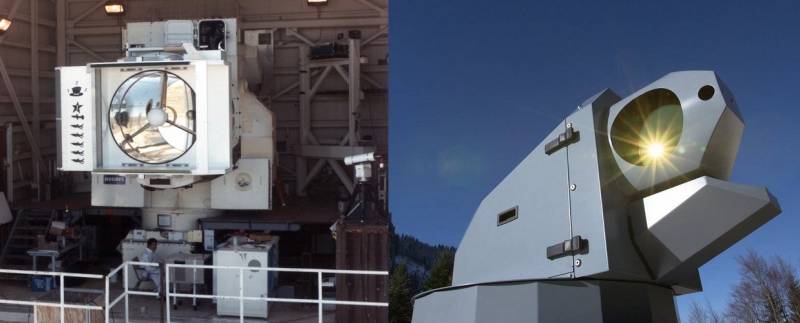
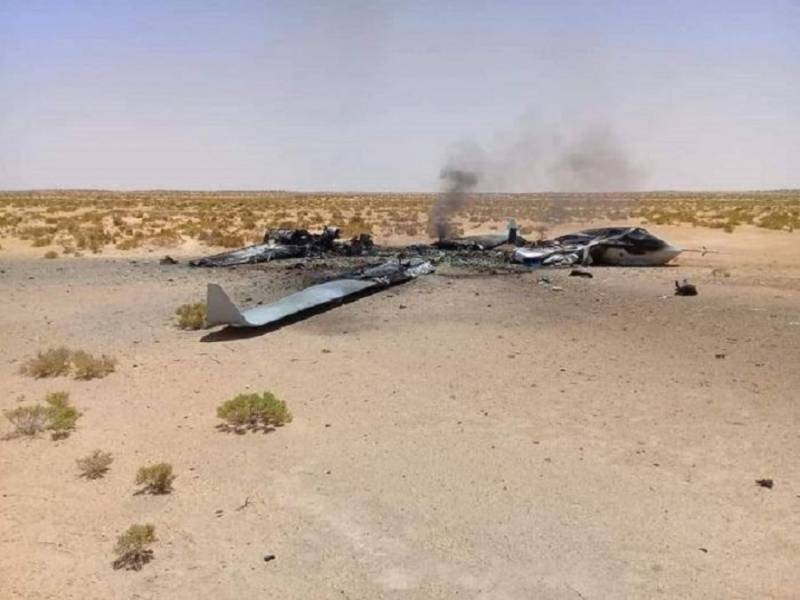
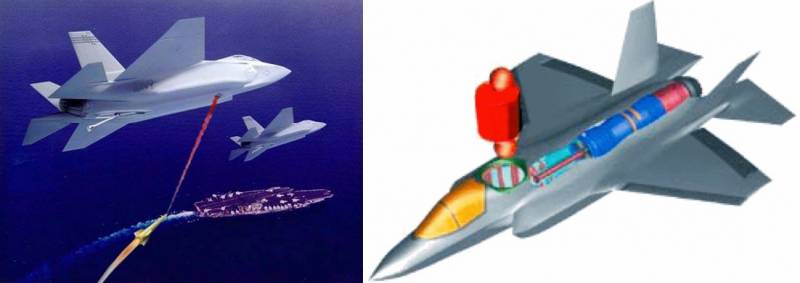
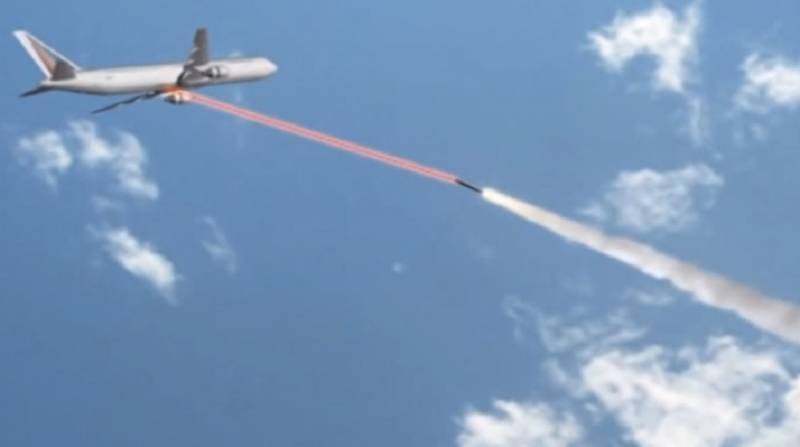
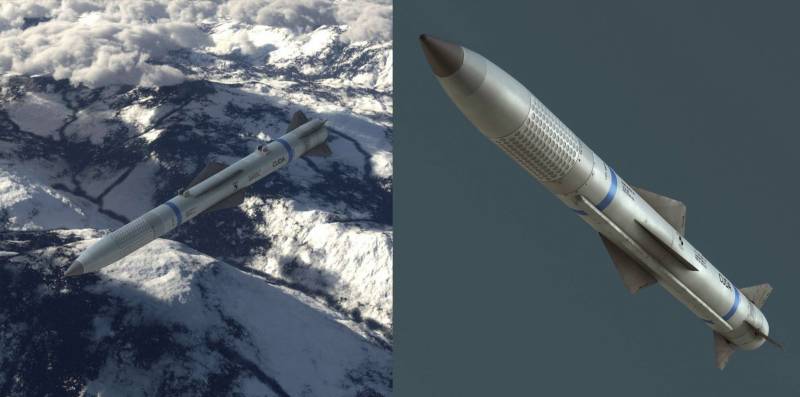
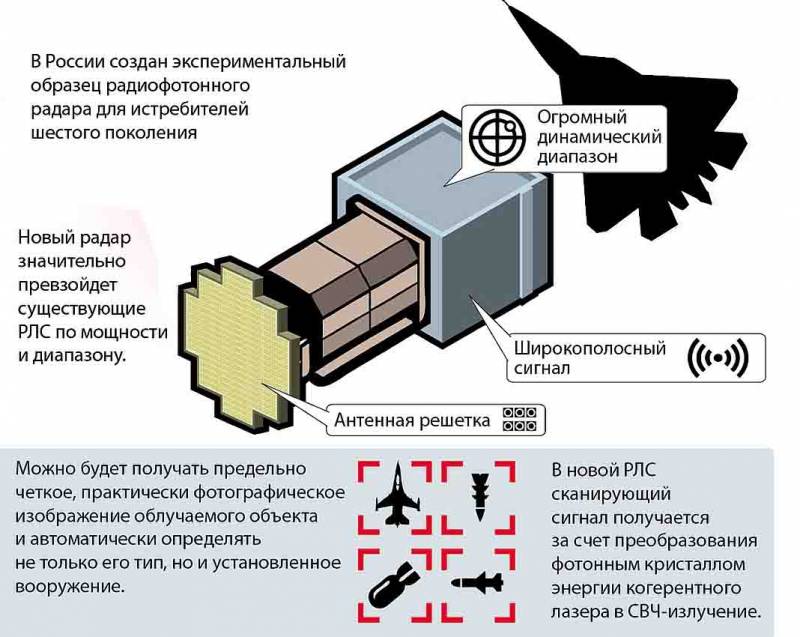

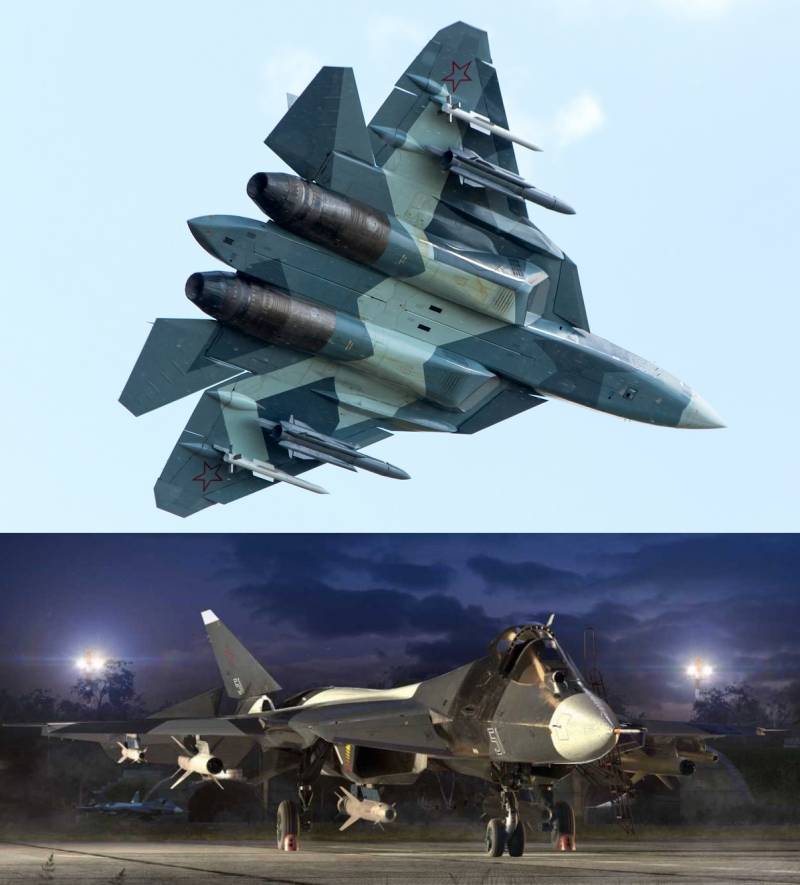
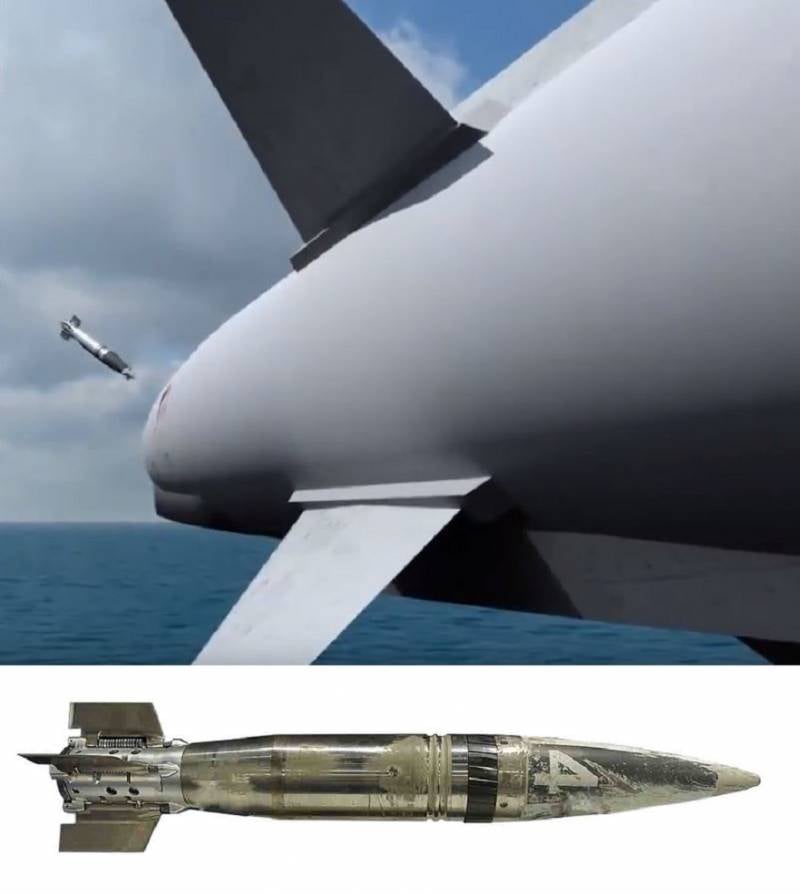

Information